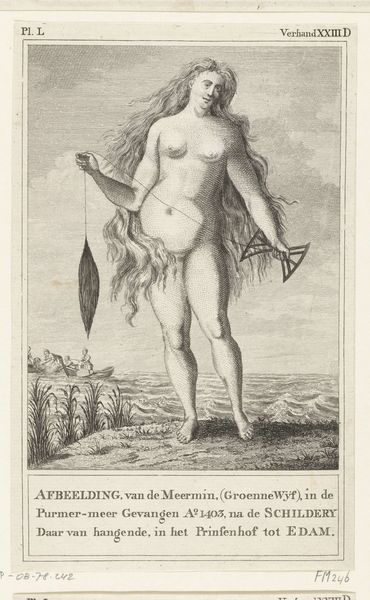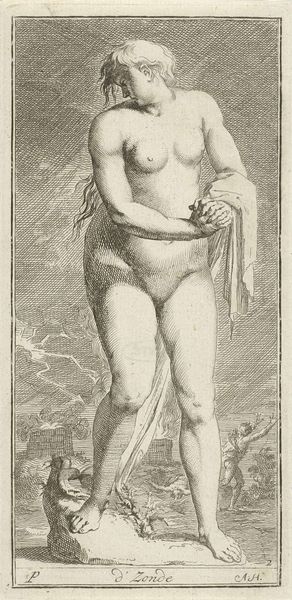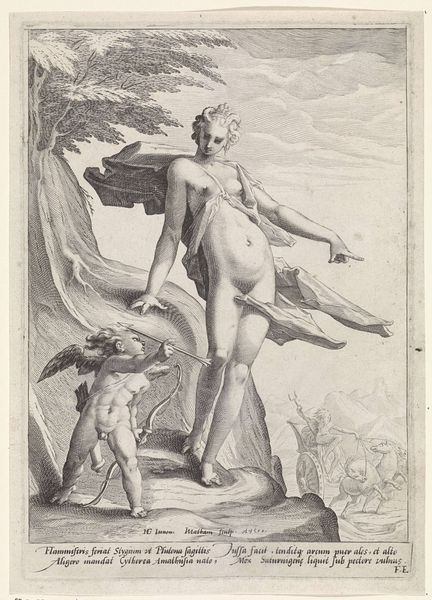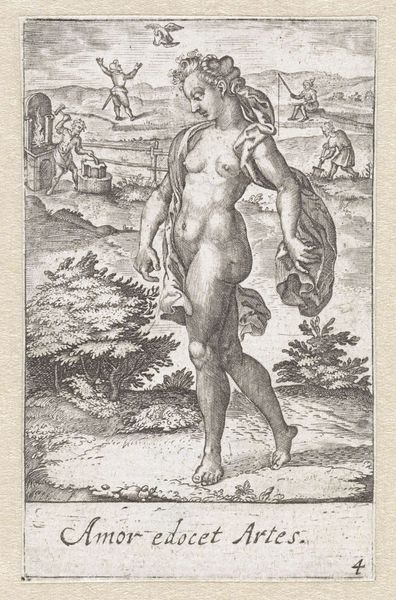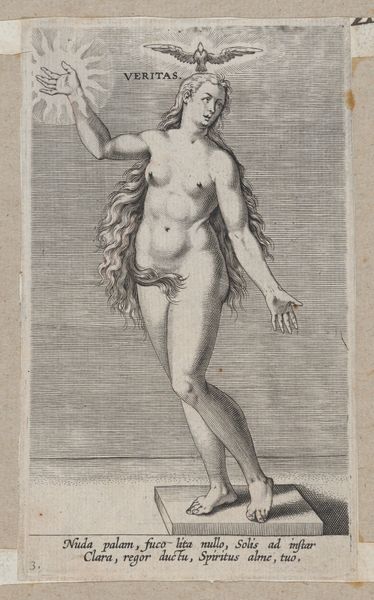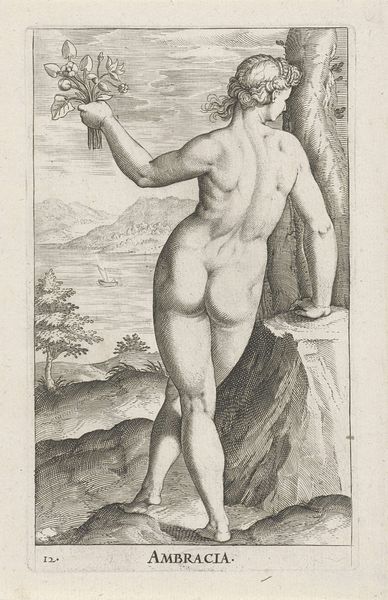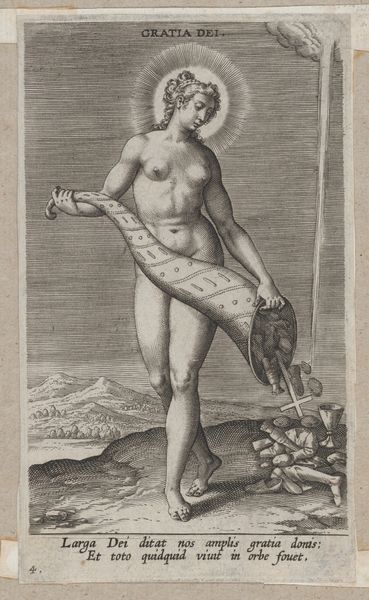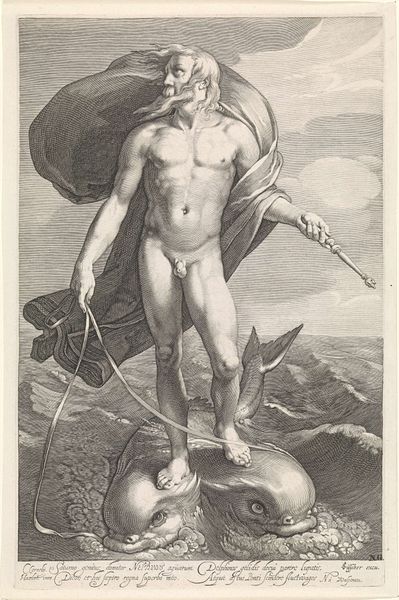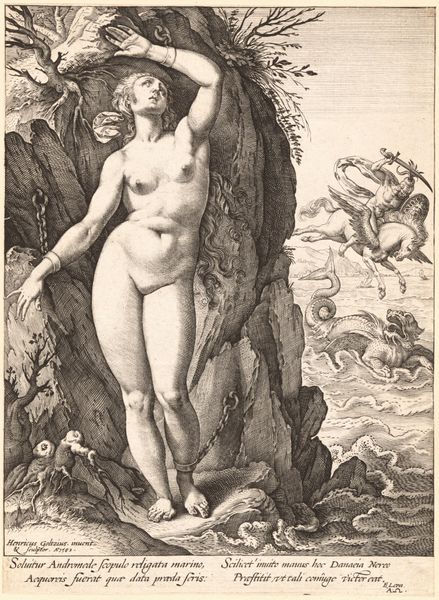
print, engraving
#
allegory
#
baroque
# print
#
figuration
#
line
#
history-painting
#
nude
#
engraving
Dimensions: height 324 mm, width 206 mm
Copyright: Rijks Museum: Open Domain
Editor: This is "Apollo met de huid van Marsyas" – Apollo with the skin of Marsyas – an engraving from between 1675 and 1680 by Richard Collin. The graphic nature of the flayed skin initially put me off, but I now find the symmetry and Apollonian confidence of the figure compelling. What do you see in this piece? Curator: Observe the interplay of line and form. Collin has skillfully used line weight to create depth and volume, particularly evident in the musculature of Apollo and the folds of the draped skin. The composition is essentially a study in contrasts – the smooth, idealized form of Apollo against the grotesque texture of Marsyas’s skin. Note how the linear quality gives form and evokes the subject matter? Editor: Yes, now that you point it out, there's an almost tactile quality to the rendering of the skin, a sense of rough texture, compared to the smoothness of Apollo's figure. It's quite striking, but does this focus on pure form have any bearing on its possible interpretations? Curator: The visual tension embodies a deeper philosophical structure. Apollo represents order, reason, and the ideal, while Marsyas symbolizes the chaotic, the earthly. The contrast emphasizes not just the aesthetic qualities but also this opposition and the implied triumph of reason over raw, untamed nature. Ask yourself, does the composition create a hierarchical value system that favours the idealistic? Editor: So it’s more than just skillful engraving; the visual components reinforce a specific ideological reading through form alone. It's interesting to consider how line and composition create a powerful visual statement. Curator: Exactly. Thinking through that type of visual engagement might transform our perception, changing an initial sense of distaste to something we recognize as having an engaging relationship between technique and idea.
Comments
No comments
Be the first to comment and join the conversation on the ultimate creative platform.
